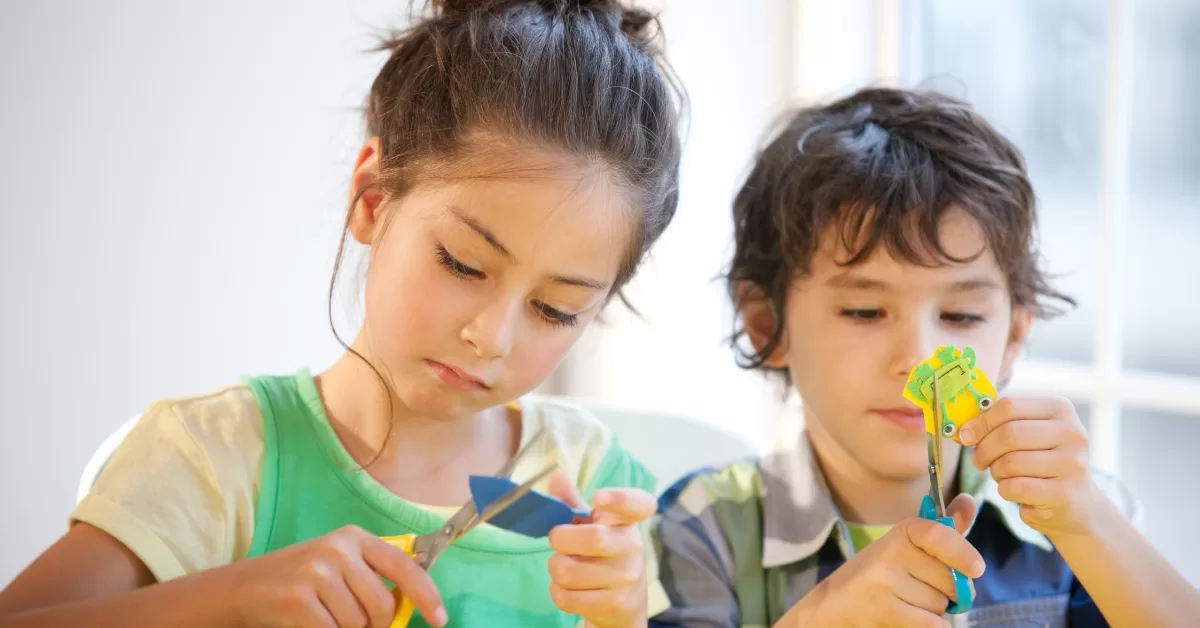Crafts are more than just a way to pass the time—they’re a tool for learning, skill-building, and meaningful parent-child interaction. When done intentionally, crafting supports fine motor development, creativity, emotional intelligence, problem-solving, and social skills. This guide will provide practical, detailed craft activities for different age groups, explain the developmental benefits, and offer tips to make crafting both fun and educational.
Why Crafts Are Important for Children
Crafting is a powerful developmental tool. Here’s why:
-
Develop Fine Motor Skills: Cutting, gluing, painting, and manipulating small objects strengthen hand-eye coordination and dexterity.
-
Boost Creativity and Imagination: Crafts allow children to experiment with ideas, create unique projects, and think independently.
-
Enhance Cognitive Development: Planning, sequencing, and executing projects improve problem-solving and critical thinking skills.
-
Support Emotional Growth: Crafting gives children a safe space to express feelings, process emotions, and develop confidence.
-
Strengthen Social Skills: Collaborative projects teach sharing, cooperation, and communication.
Age-Appropriate Craft Activities
Crafts for Toddlers (1–3 Years)
Toddlers need sensory-rich, safe, and simple crafts to explore textures and colors:
-
Finger Painting: Use non-toxic paints to encourage tactile exploration. Ask toddlers to create shapes, patterns, or simple pictures.
-
Shape Collages: Pre-cut shapes from colored paper and let toddlers glue them onto paper to make patterns or simple animals.
-
Play Dough Creations: Encourage making shapes, letters, or simple animals to strengthen hand muscles.
Tips for Parents: Keep sessions short (10–15 minutes), offer choices, and avoid small pieces that could be choking hazards.
Crafts for Preschoolers (3–5 Years)
Preschoolers are ready for projects that involve basic cutting, gluing, and following simple instructions:
-
Paper Plate Animals: Turn paper plates into masks, puppets, or imaginative creatures using markers, stickers, and cut-outs.
-
Nature Collages: Collect leaves, flowers, and sticks, then arrange and glue them on paper to make seasonal art.
-
Simple Origami: Introduce folding projects like boats, hats, or animals.
Tips for Parents: Encourage storytelling around their creations. Ask questions like “What is happening in your picture?” to enhance language skills.
Crafts for School-Age Children (6–12 Years)
School-age children can handle more structured, multi-step projects:
-
Miniature Indoor Gardens: Plant seeds in containers, decorate with DIY labels, and track growth over time.
-
Recycled Robots: Build imaginative robots from boxes, tubes, and bottle caps. Teach measurement and planning skills.
-
Seasonal Crafts: Encourage crafting decorations for holidays, teaching about traditions and cultural significance.
Tips for Parents: Allow children to plan and make decisions independently. Introduce new materials gradually to spark creativity.
Crafts for Teens (13+ Years)
Teens benefit from complex, skill-based, and personal-expression-focused crafts:
-
Scrapbooking: Combine photos, journaling, and creative design to document experiences.
-
DIY Room Décor: Create posters, wall art, or personalized organizers.
-
Advanced Painting or Sewing: Encourage learning new techniques that can develop hobbies or even entrepreneurial skills.
Tips for Parents: Support independence and offer guidance only when needed. Celebrate effort and creativity, not just the finished product.
Crafting as a Learning Tool
Craft activities can also serve educational purposes:
-
STEM Integration: Measuring, building, and experimenting teaches basic math, physics, and engineering.
-
Literacy Skills: Encourage labeling, journaling, or storytelling connected to craft projects.
-
Problem-Solving: Teach children to troubleshoot when a project doesn’t go as planned.
-
Sensory Development: Activities like clay, water painting, or textured collages enhance tactile exploration.
Crafting by Season
-
Autumn: Leaf collages, pumpkin painting, or acorn art.
-
Winter: Snowflake cutouts, holiday ornaments, and paper chains.
-
Spring: Flower crowns, butterfly mobiles, and gardening crafts.
-
Summer: Outdoor water painting, sidewalk chalk murals, and nature scavenger art.
Practical Tips for Parents
-
Keep Materials Organized: Use containers for paper, crayons, paints, and recyclables.
-
Rotate Supplies: Introduce new textures, colors, and tools regularly to maintain interest.
-
Display Creations: Encourage confidence by displaying crafts on walls or refrigerators.
-
Encourage Reflection: Ask children what they enjoyed, what was challenging, and what they learned.
-
Make It Routine: Dedicate a craft day or craft corner to make creativity a habit.
Benefits of Regular Crafting
-
Builds confidence and independence.
-
Enhances parent-child bonding through shared activities.
-
Provides hands-on learning opportunities across subjects.
-
Encourages emotional expression and regulation.
-
Fosters a lifelong love for creativity and learning.
Safety Considerations
-
Use age-appropriate, non-toxic materials.
-
Supervise scissors, small items, and hot glue or tools.
-
Teach clean-up habits and proper storage of supplies.
Conclusion
Crafts are a powerful way to nurture creativity, learning, and emotional growth in children. By providing age-appropriate projects, guidance, and encouragement, parents can make crafting both educational and enjoyable. From toddlers’ finger paintings to teens’ advanced DIY projects, crafting offers a meaningful way to strengthen skills, build confidence, and create lasting memories.
Disclaimer
All craft activities should be supervised by an adult. Materials must be age-appropriate and safe. This guide is intended for educational and recreational purposes.

